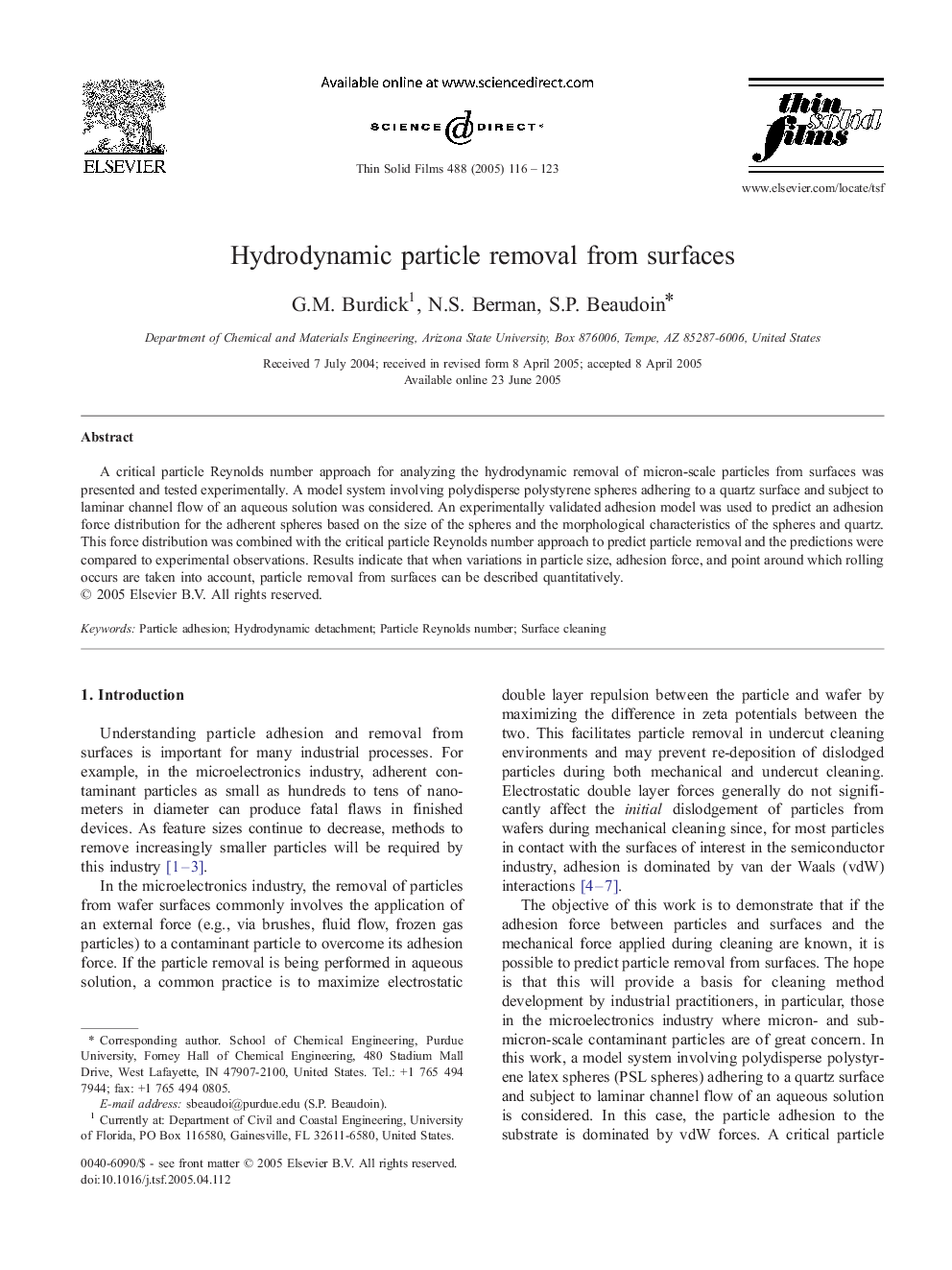| Article ID | Journal | Published Year | Pages | File Type |
|---|---|---|---|---|
| 9812316 | Thin Solid Films | 2005 | 8 Pages |
Abstract
A critical particle Reynolds number approach for analyzing the hydrodynamic removal of micron-scale particles from surfaces was presented and tested experimentally. A model system involving polydisperse polystyrene spheres adhering to a quartz surface and subject to laminar channel flow of an aqueous solution was considered. An experimentally validated adhesion model was used to predict an adhesion force distribution for the adherent spheres based on the size of the spheres and the morphological characteristics of the spheres and quartz. This force distribution was combined with the critical particle Reynolds number approach to predict particle removal and the predictions were compared to experimental observations. Results indicate that when variations in particle size, adhesion force, and point around which rolling occurs are taken into account, particle removal from surfaces can be described quantitatively.
Related Topics
Physical Sciences and Engineering
Materials Science
Nanotechnology
Authors
G.M. Burdick, N.S. Berman, S.P. Beaudoin,
